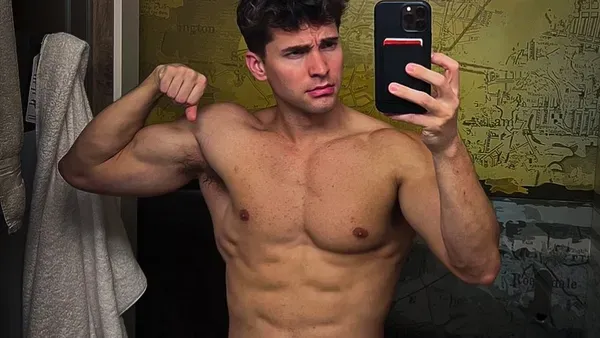
February 11, 2022
Why You Should 'Choo-Choo' to Chattanooga, Tennessee's Unsung Cultural Destination
Kelsy Chauvin READ TIME: 6 MIN.
The sweeping vistas from Chattanooga's surrounding hills and mountain ridges frame a lovely American city. From perches like Lookout Mountain, home to the Incline Railway and Rock City, to the Bluff View Art District, to Stringer's Ridge Park, the nickname "Scenic City" becomes ever clearer.
Down on the streets of Chattanooga, the culture, nightlife, and sights are just as enticing, albeit layered with a complex history that's equally worth exploring, including an active LGBTQ+ community and standout arts institutions. There's also rich African American heritage, memorialized and celebrated, which sheds light on Chattanooga's past and present.
For many visitors, the city starts with a bit of whimsy, thanks to the Chattanooga Choo-Choo. It's impossible to miss the giant "Choo-Choo" train sign atop the retired 1909 Beaux-Arts rail terminal, inspired by the WWII-era big-band song that made this city famous. The sign is a local landmark, as is the terminal, which today is a South Side attraction for shopping, dining, and lodging at the Chattanooga Choo Choo Hotel.
Anchored by the Choo-Choo, the South Side is the city's go-to entertainment district. Spend the day playing lawn games in the Glenn Miller Gardens, brunching at Frothy Monkey, and browsing souvenirs at Sweetly Southern. By night, sit outside with tasting flights of beer at LGBTQ+-friendly Terminal Brewhouse and spirits at Gate Eleven, or pour your own brews at American Draft, a beer hall occupying a historic rail car. Next, head to the Comedy Catch, Backstage Bar, and Songbirds Center for live shows, or stroll Station Street, Chattanooga's only open-container promenade, programmed with seasonal markets and events.
Discovering Local Culture

Source: Kelsy Chauvin
A short jaunt into Downtown Chattanooga from the Choo-Choo is the Bessie Smith Cultural Center and African American Museum and Performance Hall. "The Bessie" pays homage to the Empress of Blues, a Chattanooga native who was openly bisexual and one of the great early influencers of jazz and blues music, starting with her 1923 debut record. Smith died young in a car accident at age 43, and today her hometown honors her with the center's arts, education, and research programs, along with fun music festivals and neighborhood events.
The Bessie's African American Museum is especially engaging, inviting visitors to walk through Chattanooga history, starting with Native Americans' experiences and slavery through present-day race relations – all shared through personal stories, artifacts, and recreated historical vignettes and street scenes. Stay tuned for the museum's Phase II exhibit, entirely dedicated to Chattanooga's African American entertainers.
All around town, "the art scene is thriving," says Cara McGowan, communications director of the Hunter Museum of American Art. McGowan notes that galleries and outdoor public artworks adorn Chatt's neighborhoods, along with factory-turned-contemporary-arts-gallery Stove Works, and 33-acre Sculpture Fields at Montague Park.
The Hunter Museum is the crown jewel of the Bluff View Art District, a walkable neighborhood with cafés and pocket parks. The expansive museum is now celebrating its 70th year, and visitors can enjoy impressive works and changing exhibits by meandering through a converted mansion that links to a sleek modern structure overlooking the Tennessee River. In the Hunter's fantastic permanent collection, you'll find works by LGBTQ+ artists including Marsden Hartley, Paul Wonner, Whitfield Lovell, and Nick Cave – one of whose famous "Soundsuit" sculptures resides here.
Reflecting on a Complicated History

Source: Kelsy Chauvin
Outside the museum, don't miss a walk along the Walnut Street Bridge, considered the world's longest pedestrian-only bridge. The restored former railway trestle bridge ties north Chattanooga to downtown, making for perfect pictures.
However, the bridge's darker past was reclaimed in recent years with the addition of the Ed Johnson Memorial at its south landing. Johnson's harrowing story of false conviction, Supreme Court intervention, and devastating 1906 lynching on the bridge is shared at this contemplative space with edifying markers and original sculptures. It's a powerful memorial of a tragic event, and today serves as a way for the city to honor Johnson and his heroic defenders. Most of all, the memorial expands the public's understanding of the story and its significance in the fight for civil rights and justice.
Chattanooga honors another major historical event from America's darker past along the Riverwalk outside the Tennessee Aquarium, where Ross's Landing commemorates the 19th-century Cherokee Nation Chief John Ross. The Landing's "weeping wall" represents tears shed as the Cherokees were driven from their homes during the Trail of Tears, the forceful removal of all Native American tribes in the Southeast throughout the early to mid-19th century. The nationally registered historic landmark is one of several sites around the area where visitors can learn about the lives of America's original citizens.
Chattanooga Pride

Source: Getty Images
The city's queer community has grown stronger and more visible in recent years, thanks in part to fall's annual Chattanooga Pride festival and its year-round events and advocacy. And though there aren't many gay-dedicated spots in town, Alan Golds has been the big, sparkly club for dancing and drag shows on McCallie Avenue since 1977.
On the city's North Side, local entrepreneur Scottie Bowman is an out and proud Chattanoogan who opened her first restaurant The Big Chill & Grill back in 1997. It wasn't intended to be an LGBTQ+ hangout but became one anyway thanks to its all-welcoming atmosphere that was "before its time here in Chattanooga," says Bowman. "But we had always been a place for the gay community to gather, so it became a melting pot of people."
These days the Big Chill is home to drag-queen bingo Mondays, karaoke Thursdays, drag brunch every last Sunday, and other fun can't-miss events. Bowman grew her Big Chill clientele for years before opening Scottie's On The River in 2018. Scottie's is a lively, gay-friendly waterfront restaurant near the aquarium, hosting live music every third Thursday afternoon and serving up daily seafood and drink specials.
Bowman is the first to admit that being in the Bible Belt means Chatt's LGBTQ+ community knows struggles particular to the U.S. South. But the city, she says, "is getting more progressive." She notes that even during the early pandemic days, the queer clientele was so supportive by buying take-out dishes and drinks to go.
"It was harder in the early days when we first opened," she says. "But I do think we helped bring people into the 21st century in Chattanooga in terms of open-mindedness."
That feeling of progress seems common with many locals who proudly note that Chattanooga stands apart from the state's conservative reputation. Paula Wilkes, president of the Bessie Smith Cultural Center, puts it simply: "Chattanooga is a city that anyone could come to claim as their own." Says Wilkes, "It is a large city with a small city feeling, inclusive of all walks of life."
Kelsy Chauvin is a writer, photographer and marketing consultant based in Brooklyn, New York. She specializes in travel, feature journalism, art, theater, architecture, construction and LGBTQ interests. Follow her on Instagram and Twitter at @kelsycc.







